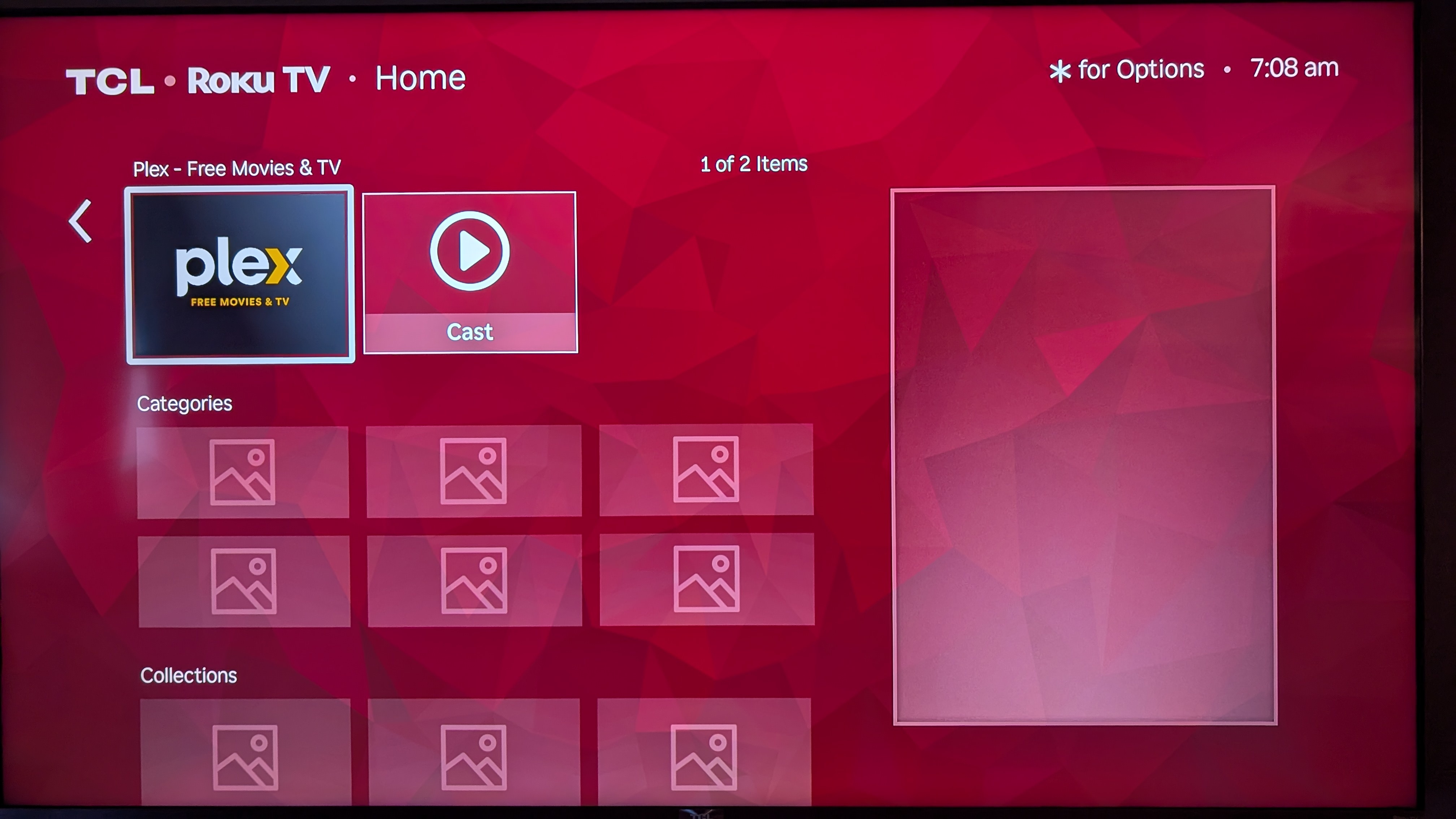I have a couple of TVs that I use HTPC appliances with. One’s a shield TV and the other’s a roku. I’m not super happy with either of them. The shield lags like crazy and apps crash constantly. The Roku is stable, but can’t decode h265 or av1. Both at riddled with ads. Does anyone have a solution they’re happy with? I mostly watch content from major streaming services and stream media from my NAS. I have a raspberry pi 4 that’s not in use right now, I tried to get it working as a set top box, but couldn’t get DRM content to work so I went back to the shield.
Do have a pi but havent bothered setting that up to be the media server yet. at the moment have a ps4 for playback on the tv and jellyfin running on the pc with the *arr stack for gathering. Im glad I changed over to jellyfin a couple months ago moving away from plex, since plex doesn’t work if PSN is down. Plex used to be decent, like 10+ years ago, jellyfin is exactly the same except theres no native app for the PS4 so I have to use the web browser but thats fine. Also have tailscale configured so I can easily reach the media server when im out and about.
I have an SFF PC currently running Mint, with Bello and steam as well as xemu and a few other goodies. The flexibility is great, if something is a bit borked I can usually just play it in VLC, and the compute allows me to run pretty much any emulator besides Xenia or that PS3 one. Once I plug a GPU into it, those should be fine too. Not bad for a cheap i5 system.
I’ve tried libreelec on a raspberry pi 4, but it just doesn’t pass the wife test.
We have a thomson streaming stick 140G (EU branding for ONN). We just use jellyfin, smarttube and our national public service streaming apps. It’s in apps-only mode, but Google still injects one ad on the home screen. I didn’t bother with a custom launcher just yet.
I’m using a Ryzen Mini PC running Debian and Flex Launcher.
Works well as both a media consumption machine and light gaming rig.
Laptop hooked up to the TV. Always felt more reliable than any other device to me. I also use rustdesk for a remote connection solution
I run a i3 14100 for my media server with Plex, a pihole on my network and a Roku box on one TV and just the app on the others I never get any ads or have issues but I don’t use any streaming services I just use the arr’s and my own content
I’m using a Shield TV Pro with the default launcher disabled, replaced with FLauncher, and the netflix and voice search buttons disabled via button mapper.
I’m 1000% happy with it and absolutely would not go back to an actual HTPC.
Oh, I also uninstalled youtube and replaced it with SmartTube Beta
Is there any way to fling YouTube videos to SmartTube from a smartphone?
That’s the one thing locking me into Kodi.
Yes, you can cast from the official YouTube app (or Revanced). You need to generate a code for connection in the SmartTube settings, then connect your phone through the cast menu. The option in the cast menu on the phone is called something like “Connect with code” IIRC.
I ran into issues with this function on my shield pro, it would randomly reopen the smart tube app continuously until I disconnected my phone.
Not that I’ve been able to find. I rarely notice but when I do it’s quite frustrating.
The biggest question is, are you looking for Dolby Vision support?
There is no open source implementation for Dolby Vision or HDR10+ so if you want to use those formats you are limited to Android/Apple/Amazon streaming boxes.
If you want to avoid the ads from those devices apart from side loading apks to replace home screens or something the only way to get Dolby Vision with Kodi/standard Linux is to buy a CoreELEC supported streaming device and flashing it with CoreELEC.
List of supported devices here
CoreELEC is Kodi based so it limits your player choice, but there are plugins for Plex/Jellyfin if you want to pull from those as back ends.
Personally it is a lot easier to just grab the latest gen Onn 4k Pro from Walmart for $50 and deal with the Google TV ads (never leave my streaming app anyways). Only downside with the Onn is lack of Dolby TrueHD/DTS Master audio output, but it handles AV1, and more Dolby Vision profiles than the Shield does at a much cheaper price. It also handles HDR10+ which the Shield doesn’t but that for at isn’t nearly as common and many of the big TV brands don’t support it anyways.
I’m not a home theater power user, but this is good info to make sure my setup is future proof for when I finally get a new TV. All these different standards get really confusing.
Apple TV. No ads. Works great.
What I don’t like about ATV and the Apple ecosystem in general is the lack of ease with sideloading. Ha, I’ve created throwaway accounts with fake emails in the past and then lost access to the email account followed by the Apple device basically being bricked a result. If it’s so “private” then why not let me install free apps from the App Store without an account?
None at all? If so how? My friends with Apple TV get an obnoxious amount of ads in their YouTube app for example.
I think they mean no ads in the UI. There are still ads in the YouTube app since Google needs that revenue. Ads don’t take up approximately 50% of the home screen though like they do on a Roku TV.
Ah, I didn’t even consider ads in the UI would be a thing. How disgusting
Roku TV has been unbearable lately. There’s a whole row of ads before I even get to the physical inputs on the TV. Plus there is a full height ad on the right and a half height ad on the left.

Confirm. Never seen something chatter on the network so much as well (remote control setting on maybe?). I don’t know the model but i threw it on a physically separate wlan with no Internet and a pihole and holy jebus it’s almost as bad as the Google nest hubs.
Bingo. And if you don’t use apps with ads, like only using jellyfin, you get none at all.
Ryzen 1200/GTX 960 small build running Linux Mint. There’s a UHD blu-ray drive in it as well with the custom firmware to rip disks. Media is stored on my NAS that handles Plex and transcoding. The parts were mostly old extras I had lying around, just needed the case, blu-ray drive and boot SSD. Oh and the like $20 wireless Logitech keyboard/track pad combo for control.
Regarding DRM, Netflix (and probably others) require the Widewine library to play back DRM content. This works perfectly fine on a normal Ubuntu PC, but does not work on the Pi because the library does not support ARM, only x86.
So Id just get any normal PC. Used enterprise mini PCs can be had for quite cheap, and they are small and efficient, and high quality. Search for HP, Dell or Lenovo mini PCs , or 1 litre PCs.
I haven’t used Netflix on my Pi for a few years, but at least in the past it worked fine by pulling the DRM lib from Android. I used Netflix and Disney Plus on Kodi (with a plugin) for a couple years until we stopped watching on that TV (in the bedroom).
Oh cool, didn’t know you could do that
Apple TV is rad, because you can pair it with a controller, and use the Steam link app to play on your computer from another room.
No need to have the computer near the tv for couch gaming. No need to listen to the pc fans screaming.
Android devices can do that too. I use steam link on my shield.
Intel NUC running Linux. Not the cheapest solution but can play anything and I have full control over it. At first I tried to find some kind of programmable remote but now we have a wireless keyboard with built-in touchpad.
Biggest downside is that the hardware quality is kind of questionable and the first two broke after 3 years + a few months, so we’re on our third now.
I was tempted by these n100 mini PCs, but worried about the no-name components. I saw many people on reddit/lemmy recommending Dell, Lenovo, HP micro form factor PCs. You can pick them up used from eBay as companies clear out “old” computers. The advantage of the known brands is ongoing firmware support.
Shield, mine is very stable, never crashes, doesn’t lag
Two Shield TVs because there’s not really anything else.









